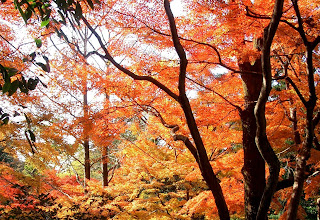
I would like to introduce my neighbor today. I live in Kashiwara City, Osaka. It is about 2 hours far from Kansai Gaidai. It locates east part of Osaka and near Nara. My hometown is countryside, so there is a lot of nature such as rivers, mountains and rice fields. My hometown is also famous for grapes. There are a lot of vineyards near my house, and it has several kinds of grapes such as Black grape and Muscat. We have original wine in my hometown.There is grape picking event from August to October. We can eat grapes as much as we want if we pay 1.100 yen. Picking fruits is popular event in Japan. For example, we have strawberry picking, pear picking and apple picking.
The first picture shows Japanese vineyard. Japanese vineyard is different from other countries’ a little because Japanese land is not so large as other countries. Other countries can use large land for planting grapes, so it is usual that the vines are planted on the ground. In contrast, in Japan, we have to use our narrow land effectively. Therefore we have different way of planting vine. At first, we make shelves, and then, make grape’s vine trail on the shelves, and grow vines on high place. It is the best way to grow many grapes in limited space in Japan.

Second picture shows Japanese residential area. In Japan, houses are built close to each other. It is also because Japanese land is small. In addition, we have fences around our houses. We have fences not only around houses, but also around schools. When I went to Australia 4 years ago, I found that they didn't have fences around their houses and schools. Moreover, neighbors came into school yard and walking with their dog. I was surprised because in Japan, we can’t enter school yard if we are not student in the school. If someone enters without permission, he will be regarded as a suspicious person. Although we have fences between our houses, the connection of our community is strong. Every town has a residents’ association, and cooperate with each other. For example, we make several gropes and clean parks near our houses on Sunday in turn. We respect and cooperate with each other to make our town better.


